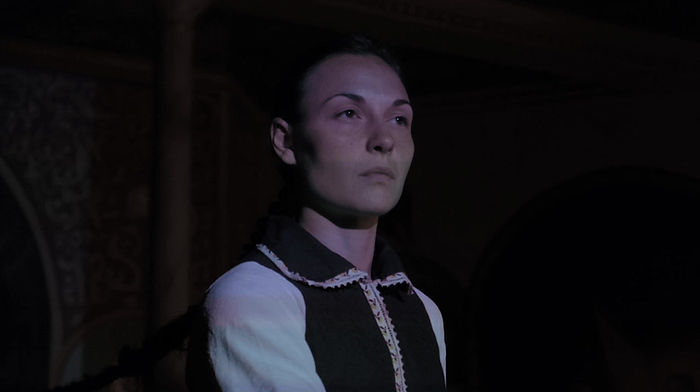Svadebka Свадебка

SVADEBKA in Russian means "a small wedding". This is the Russian title for Les Noces, one of the most important ballet works of the 20th century, composed by Igor Stravinsky and choreographed by Bronislava Nijinska. Les Noces was created for the Ballets Russes in Paris, a group of artists who left Russia at the beginning of the 20th century and, under the direction of Sergei Diaghilev, became agents of historical changes in Western ballet. Les Noces from 1923 follows the various stages of a traditional Russian wedding ceremony. It is a braid of folk texts selected by Stravinsky from a collection of Russian folk songs compiled by the linguist and folklorist Pyotr Kireyevsky, of music brilliantly orchestrated for an ansamble of four pianos and percussion instruments and choreographies that blend a multitude of body and hand gestures into expressive group scenes.
One hundred years after the Paris premiere of Les Noces, we return to examine the words, music, and movements of Stravinsky and Nijinska's creation, from which arises the centrality of the Russian wedding hair. The choreographic attention that Svadebka dedicates to the motif of hair in Les Noces arises precisely because hair is lifeless strands devoid of bodily sensation. Therefore, we must comb, braid, and tie it, thus controlling its potential for eroticism, which one must hold back until the wedding day and beyond.
Svadebka in 2024 Jerusalem traces Les Noces from 1923 through a parallel historical trajectory: the pilgrimage to Jerusalem from the areas of the Russian Empire since the mid-19th century, bringing with it liturgical traditions by Russian Orthodox clergy and establishing some of the first buildings outside the city's walls, in the area acquired by the Russian Empire from the Ottoman Empire and known since then as the "Russian Compound." Even if some of the buildings in the Russian Compound no longer house the envoys of the Russian Empire today, political power has not abandoned it, but has merely been transformed into other institutional forces: policing, judiciary, educational, and museological.
Concept and choreography Guy Dolev
Original music after Stravinsky Roi Becker
Dancer Yulia Mejetskaya
Soprano Nika Yankelevich
Production Yael Kalif
Costume design Matan Anchisi
Artistic advisor Carmel Ben Asher
Musical advisor Amir Lekach-Avivi
Photography Seva Smolnik
Graphic design Omer Dolev
In the Museum of Russian Presence in Jerusalem, Svadebka, then, relocates Les Noces: bells ring a forgotten lament, the bride Nastasia Timofeyevna sways in a heavily echoing praying hall, her long braid unravels only for her hair to then be retied in two braids. From this moment, the history of Russian-French modernist ballet and the history of the Russian presence in Jerusalem appear as two forms of Russianness outside of Russia, two paths through which traditions - that of the ballet avant-garde, that of folk rituals, and that of the Orthodox-imperialism - were brought from the Russian realm to two centres of pilgrimage: Paris and Jerusalem. From the intersection point of these two axes, we also seek to observe the current political moment, where suffering and indifference, shock and alienation, drive men and women to their lives or deaths, by choice or by force, as a mass of braided and tied hair, as a heap of plucked and scattered hair, in the painfully bleeding territories of Russia, Ukraine, Israel, and Palestine.
Photos 1, 5, 6 by Seva Smolnik; photos 2, 3, 4, 7-10 by Natasha Shachnes.
Svadebka was supported by Mifal HaPais Council for the Culture and Arts, by the Israeli Ministry of Culture's Martens Hoffman Foundation for independent artists, and by Yael - home for independent artists in the field of dance, Jerusalem. We thank Mamuta Art and Research Centre and Bar-Kayma for culture, art, music and peace for their advise and assistance in the production process.









